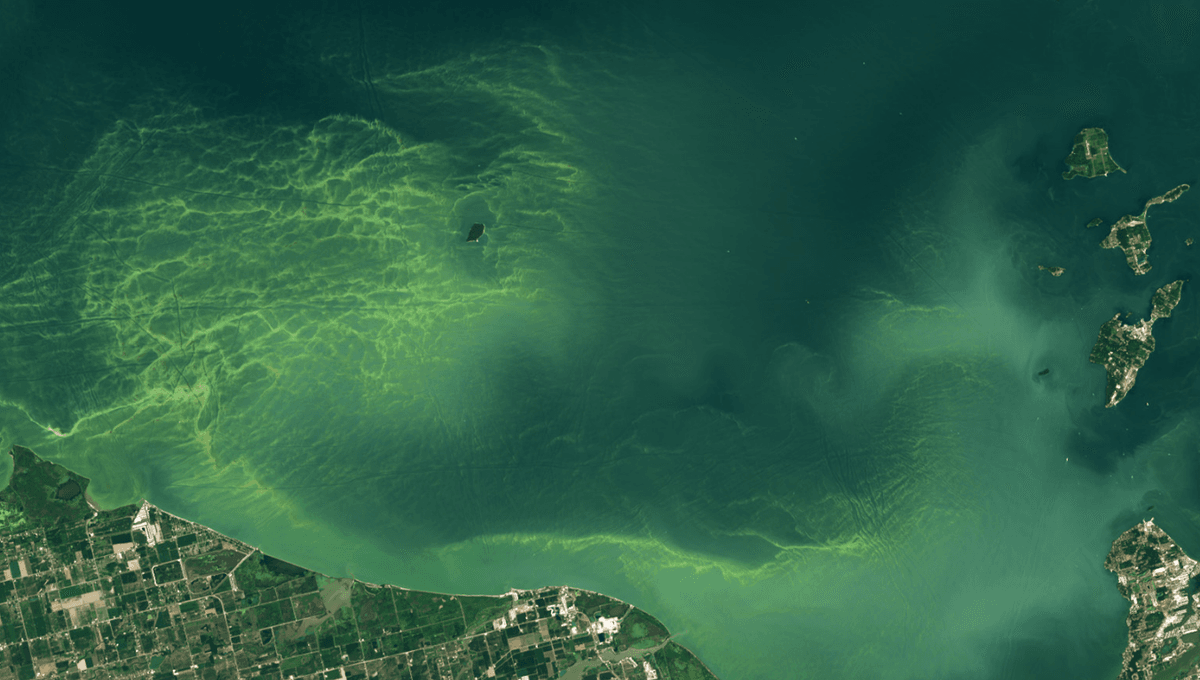
With summer drawing to a close, an algal bloom in Lake Erie that began forming around June is still going strong, bursting with a glow of emerald green (or should that be blue?).
The Landsat-9 satellite snapped images of the algal bloom in Lake Erie on August 13, revealing it covered approximately 830 square kilometers (320 square miles) of water within its western basin, according to NASA Earth Observatory. It continued to grow to this season’s likely largest extent of 1,700 square kilometers (660 square miles) on August 22.
The unusual green-blue color is the result of microscopic organisms known as cyanobacteria that have been kicked into overdrive by warm temperatures and an excess of nutrients, such as nitrogen and phosphorous, from agriculture or industry.
Weather can further amplify these factors. In April 2024, for instance, the surrounding area of Lake Erie received a downpour of record rainfall followed by an intense heatwave, providing the perfect fuel for this summer’s bloom.
Lake Erie, the fourth largest of the five Great Lakes of North America, regularly experiences algal blooms, primarily because of nutrient runoff from the Maumee River.
As interesting as it may look, algal blooms can be dangerous for both wildlife and humans. Some of the most dominant organisms in the Lake Erie bloom are Microcystis cyanobacteria, which produce the toxin microcystin. The toxins become concentrated in scum on the water’s surface, although they can also be airborne.
Severe human health effects are fairly rare, but exposure to cyanobacterial toxins is known to produce allergic reactions such as skin rashes, eye irritation, and respiratory symptoms, according to the Environmental Protection Agency.
Livestock and pets can become very sick if they drink water contaminated with toxins. Fish are also known to suffer mass die-offs in water bodies with persistent blooms. Toxins are part of the problem, but they also have to deal with a lack of oxygen caused by the abundance of microorganisms in the water.
NOAA’s Great Lakes Environmental Research Laboratory has eight stations dotted in western Lake Erie to keep an eye on levels of these nasty toxins. Their data suggests levels of microcystin peaked earlier in the summer, around late July and early August, although concentrations still remain high in early September.
Data like this, as well as detailed satellite imagery, plays a key role in understanding algal blooms and forecasting when they might strike. It might also provide some clues as to why big blooms are starting to occur for the first time in the other Great Lakes, such as Lake Superior. By no surprise, climate change is a prime suspect.
Source Link: Great Lake In North America Turns A Lively Green Due To Toxic Algae Takeover